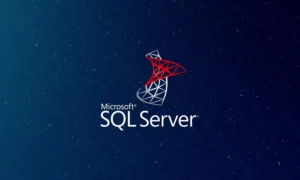The COVID-19 pandemic has shifted much of our daily lives online, from remote work to online shopping and virtual events. As a result, the demand for reliable and high-performance web hosting has never been greater. VPS is popular for its balance of affordability and customization, making it a popular choice for individuals and businesses.
VIRTUAL PRIVATE SERVER:
A Virtual Private Server (VPS) is a type of web hosting that provides the user with a dedicated virtual environment within a shared hosting environment. In simpler terms, it is a virtual machine, leased to a user as a service by a web hosting provider. The user has complete control over the operating system, installed software, and allocated resources of the virtual machine.
This level of control and customization makes VPS an attractive option for those seeking more flexibility than shared hosting. With a VPS, users can choose the amount of resources they need, scale up or down as needed, and install custom software and applications. However, to maximize the benefits of a VPS, it is essential to optimize it for peak performance and reliability.
OPTIMIZING VIRTUAL PRIVATE SERVER:
Optimizing a VPS is critical to ensure that it performs efficiently and reliably. VPS optimization involves fine-tuning the virtual environment to maximize resource utilization, reduce downtime, and improve website or application performance. Failure to optimize your VPS can lead to poor website performance, long loading times, and high bounce rates, which can negatively impact user experience and ultimately lead to loss of revenue.
Besides, it requires a deep understanding of the underlying technology. It includes the operating system, web server, and other software installed on the VPS. There are several techniques for optimizing a VPS, including choosing the right VPS plan, using caching plugins, and many more.
Let us learn some of the ways by which one can easily optimize the VPS. These are as follows:-
WAYS FOR OPTIMIZING VIRTUAL PRIVATE SERVER:
Virtual Private Servers (VPS) are a popular choice for web hosting, offering a balance between the affordability of shared hosting and the customization and control of dedicated servers. However, optimizing a VPS is essential to ensure that it delivers the performance and reliability required for your website or application.
Choose the right VPS plan-
The first step in optimizing your VPS is to choose the right plan. Make sure that the plan you choose has enough resources (CPU, RAM, Storage) to meet your website or application’s needs. Don’t go for the cheapest option, as it may not provide enough resources, and lead to slow performance and downtime.
Moreover, it’s important to consider the scalability of the plan, as your website or application may experience growth over time. Ensure that your VPS provider allows you to easily upgrade your plan or add additional resources as needed.
Use a caching plugin-
A caching plugin can improve the performance of your website by caching static content and reducing the number of database queries. This can help reduce the load on your server and improve the user experience. WP Super Cache, W3 Total Cache, and WP Rocket are three prominent caching plugins.
In addition to caching static content, caching plugins can also provide other optimization features, such as minification, compression, and browser caching. These features help to reduce the size of files sent to the user’s browser, thereby reducing page load times and improving the overall performance of your website or application.
Optimize your database-
A poorly optimized database can slow down your website or application. Optimize your database by removing unused tables and data, optimizing queries, and repairing database tables. This can significantly improve the performance of your website or application. Other techniques may include using indexes to speed up queries, limiting the use of plugins or add-ons that rely heavily on the database, and using a database management tool to monitor and optimize database performance.
Monitor server resources-
Monitoring server resources can help you identify performance issues and take action to prevent downtime. Use tools like top, htop, and iotop to monitor CPU, RAM, and disk usage. You can also use tools like Nagios, Zabbix, or Munin to monitor the health of your VPS. It enables you to quickly identify and resolve issues before they impact your website or application.
Use a content delivery network (CDN)-
A CDN can improve the speed and reliability of your website by delivering content from servers located closer to your users. This can reduce the load on your VPS and improve the user experience. Some popular CDN providers include Cloudflare, Amazon CloudFront, and Akamai. CDNs work by caching static content, such as images, videos, and scripts, on multiple servers located around the world. By using a CDN, you can also reduce the load on your VPS and reduce the risk of downtime caused by traffic spikes or server failures.
Regularly update software and security patches-
Regularly updating your software and security patches is crucial to ensure that your VPS remains secure and performs optimally. This includes updating your operating system, web server, and other software installed on your VPS. You should also apply security patches as soon as they are released to ensure that your VPS is not vulnerable to exploits.
Further, to apply security patches, it’s important to regularly update your VPS software to ensure that you have access to the latest features, performance improvements, and bug fixes. Many VPS providers offer automated update tools or managed services to simplify the process of updating your software.
Implement a web application firewall (WAF)-
A WAF is a security tool that monitors and filters incoming web traffic to prevent malicious requests and attacks. By installing a WAF on your VPS, you can protect your website or application from common web attacks, such as SQL injection, cross-site scripting (XSS), and brute force attacks. Also, WAF can also provide real-time threat analysis and alerting, enabling you to quickly identify and respond to attacks before they cause damage to your website or application. A WAF can improve security and prevent data breaches or downtime caused by cyberattacks on your VPS.
CONCLUSION:
Optimizing a VPS requires a holistic approach that addresses performance, scalability, and security. By adopting the right optimizing methods you can ensure that your VPS performs optimally and reliably, even under heavy traffic loads. Optimizing VPS enhances user experience, secures data from cyber threats, and enables scalability and flexibility for growth.
EstNOC provides web hosting services. We are offering various hosting services for a variety of web servers such as Dedicated, Virtual, Shared, Colocation, and many more. You can easily get a virtual private server in estonia and other servers at competitive market prices. Contact us for more information and avail yourself of the best web hosting services.








